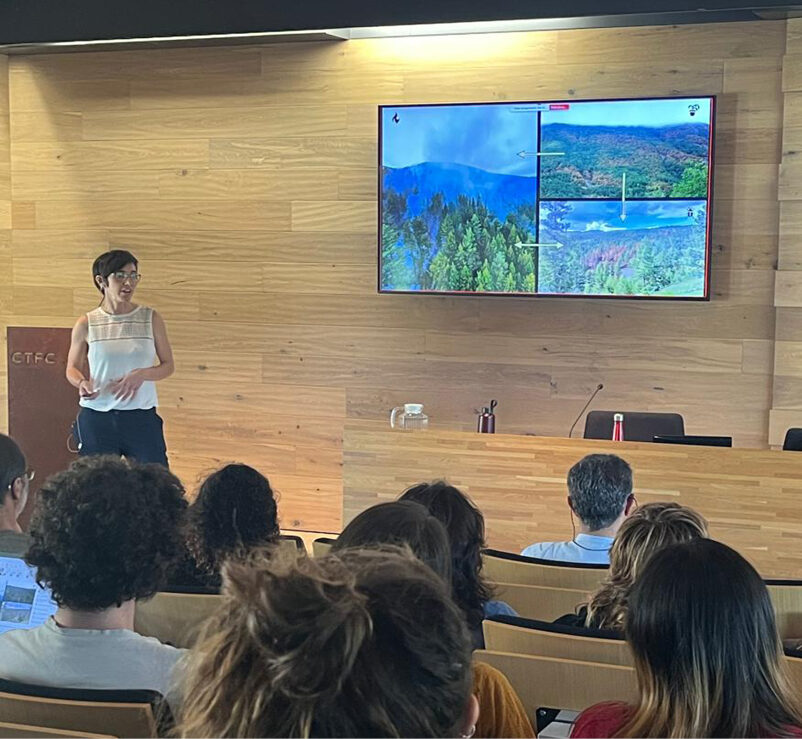The results provide new insights to enhance the resistance of Mediterranean forests to wildfires, droughts, and pests
Today, July 18, researcher Lena Vilà, from the Silvopastoral Ecology and Management group at the Forest Science and Technology Centre of Catalonia (CTFC), has defended her doctoral thesis focused on the role of forest management in improving forest resistance to multiple disturbances.
The increasing intensity of natural disturbances such as wildfires, prolonged droughts, and insect outbreaks —driven by climate change and land-use changes— poses major challenges for forest ecosystem resilience. In response to this scenario, Vilà’s thesis aims to identify forest management strategies that can simultaneously enhance the resistance of Mediterranean forests to multiple types of disturbances.
The research focused on two ecologically and economically important tree species: Pinus nigra in the Mediterranean region and Pinus ponderosa in western North America. It evaluates the effects of various silvicultural treatments, including thinning at different intensities and prescribed burning, applied directly to the understory vegetation or after a thinning treatment.
The study adopts a multidisciplinary approach combining simulation modelling, dendrochronology, stable isotope analysis (carbon and oxygen), and terpene analysis —chemical compounds linked to tree defense. This comprehensive methodology has enabled the assessment of tree responses to treatments at physiological and structural levels.
Results show that high-intensity thinning, which significantly reduces forest stand density, increases resource availability for the remaining trees, boosting photosynthesis, tree water balance, and the production of chemical defenses. When combined with prescribed burning, these treatments have a synergistic effect, leading to a noticeable increase in resistance to multiple stressors. In contrast, prescribed burns applied without prior thinning showed no significant effect on tree resistance to pine processionary moth.
The thesis concludes that management strategies targeting both the tree layer and the understory can play a key role in adapting forests to new disturbance regimes under climate change. “These findings offer valuable empirical evidence to design more efficient, multifunctional, and adaptive forest management practices, grounded in science and aimed at long-term resilience,” Vilà explains.
Last modified: 18 July 2025










